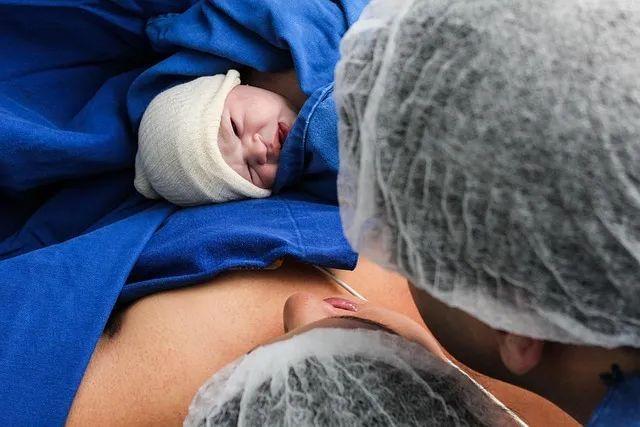In-depth analysis of the whole process of surrogate labor and delivery room: the practice of medical standardization and fine management

In-depth analysis of the whole process of surrogate labor and delivery room: the practice of medical standardization and fine management
As the core place of labor and delivery, the delivery room carries the important responsibility of the safety of mothers and babies. The following is a systematic analysis of the operation mechanism and medical logic of modern maternity wards from the five dimensions of standardized configuration of maternity wards, collaboration of medical teams, management of the birthing process, treatment of critical illnesses and humanistic care.
I. Standardized Configuration of Delivery Room and Infection Control
Space partition and equipment configuration
Waiting room: each bed is equipped with a wireless fetal heart rate monitoring system (CTG), which continuously monitors the fetal heart rate (normal baseline 110-160 bpm) and the pressure of contractions (standard contractions: 3 times in 10 minutes, lasting 40-60 seconds);
Labor and delivery room: integrated delivery bed (adjustable truncal position, lateral position), neonatal radiation table (temperature maintained at 36.5-37.5°C), emergency medication cart (contractions, cabergoline, tranexamic acid, etc.);
Isolated delivery room: negative pressure system (air exchange rate ≥12 times/hour) for infectious disease cases such as HBV DNA>10^6 IU/mL and unregulated syphilis treatment.
Nosocomial infection prevention and control system
Air cleanliness meets Class II environmental standards (bacterial count ≤ 200 CFU/m³), and Class B vacuum sterilizers are used for sterilization of instruments (Sterilization Assurance Level SAL=10^-6);
Surrogate mothers are required to complete screening for Group B Streptococcus before entry (5 million IU of penicillin q4h intravenously at delivery for positive cases) to reduce the rate of neonatal infection (from 1% to 0.1%).
II. Healthcare team roles and rapid response mechanisms
Midwife-led responsibility system
Implementation of “one-on-one full accompaniment of labor”, midwives need to complete the assessment of 200 normal deliveries, master the indications of perineal lateral incision (abnormal fetal heartbeat, shoulder dystocia) and suture techniques (Ⅱ degree laceration using 3-0 absorbable thread for layered suture);
Activate the “15-minute warning” for stalled labor (active dilatation <1 cm/h): notify the obstetrician to arrive for evaluation, and rupture membranes artificially if necessary (AFI <5 cm should be alerted to fetal distress). Multidisciplinary rapid response team (RRT) Obstetricians-anesthesiologists-neonatologists are jointly on duty to achieve the “5-minute emergency cesarean section” standard: ≤30 minutes from the decision to operate to the delivery of the fetus (U.S. ACOG guidelines); Postpartum hemorrhage (>500 mL) management process:
Level I protocol: Cabergoline 100 μg sedative push + uterine massage (bleeding 800-1000 mL);
Secondary regimen: Bakri balloon tamponade (85% success rate) + tranexamic acid 1 g IV (CRASH-2 study showed 15% reduction in mortality);
Tertiary regimen: uterine artery embolization (92% effective in stopping bleeding) or obstetric hysterectomy (only used in extreme cases such as DIC).
III Quantitative management and intervention nodes of the labor process for surrogate mothers
First stage of labor refined monitoring
Latent phase: contractions are 5-6 minutes apart and last ≤20 hours (primigravida) / ≤14 hours (metrorrhagia);
Active phase: after dilatation of the uterine opening ≥6 cm, it needs to progress ≥1 cm per hour, otherwise the diagnosis is stagnation of labor, and the cephalopelvic relationship needs to be assessed (forceps assistance is feasible for a fetal head position of SP+1 or less).
Precise application of analgesic techniques
Intrathecal anesthesia: administered when the uterine opening is 3 cm, with ropivacaine concentration of 0.1% + sufentanil 0.5 μg/mL, analgesia is 98% effective and does not interfere with the course of labor (confirmed by NEJM study);
Guided labor: combined use of TENS low-frequency pulses (frequency 50 Hz) reduced pain score (VAS) by 3 points and shortened labor duration by 1.2 hours (Cochrane evidence-based data).
Second stage of labor timeframe control
≤3 hours (without analgesia) or ≤4 hours (with analgesia) for surrogate mothers in primiparous labor and ≤2 hours (without analgesia) or ≤3 hours (with analgesia) for transient mothers;
In case of arrest of fetal head descent (no progression at 1 hour), the indication for exit forceps was assessed (fetal head bony part up to +3 or less), and the APGAR score did not differ from natural delivery (JAMA study).
IV. Labor and delivery warning and management of high-risk surrogate mother pregnancies
Rapid identification of fetal distress
CTG three-level classification system:
Class I (normal): baseline variation of 6-25 bpm, accelerated presence, no need for intervention;
Class II (indeterminate): variance <5 bpm persisting for 40 minutes, requiring amniotic cavity perfusion (NS 500 mL warmed to 37°C) or maternal position adjustment; Category III (abnormal): sinusoidal wave or repeated late decelerations, immediate termination of pregnancy. Preparation of preterm infants for rescue Preterm labor at <34 weeks: completion of dexamethasone for fetal lung maturation (12 mg intramuscular q12h × 4 times) 48 hours before delivery, and preheating of the NICU team at delivery in a transfer warmer (temperature 36°C, humidity 70%); Very low-birth-weight infants (<1500 g): delayed cord ligation (DCC) for ≥60 seconds, elevated blood volume by 45 mL/kg, and reduced risk of intraventricular hemorrhage (RR 0.59). V. Doctor-patient communication and ethical practice Informed consent special considerations Psychological support strategies For those with anxiety triggered by labor pain (SAS score ≥50), positive mindfulness stress reduction training (MBSR) was implemented: 20-minute daily breathing meditation, and cortisol levels were reduced by 30%; Immediate postpartum skin-to-skin contact (SSC): newborns in the prone position against the mother’s chest for ≥90 minutes to promote oxytocin secretion (200% increase in serum concentration) and reduce the risk of postpartum depression (4-point reduction in EPDS score). VI. Future Development Direction Intelligent labor and delivery system: Fetal heart AI analysis software (e.g., “Oxevision”) predicts fetal acidosis (pH < 7.15) with 89% sensitivity; Wearable devices to monitor maternal vital signs (e.g., Triage® Fetal Monitoring Belt) with wireless transmission to a central monitoring station. Minimally invasive interventional techniques: Uterine artery embolization (UAE) is used for refractory postpartum hemorrhage, with a success rate of >90% in hemostasis and preservation of reproductive function;
Placental implantation cases apply abdominal aortic balloon blockade (hemorrhage reduced from 3000 mL to 800 mL).
Delivery room management has entered the era of “Precision Medicine”, where the complication rate of vaginal delivery is controlled at <5% through standardized process, rapid response mechanism and humanized service. It is more important for surrogate mothers to follow medical ethics in childbirth, and to achieve a balance between science and humanity in the inheritance of life on the basis of safeguarding the safety of mothers and babies.






